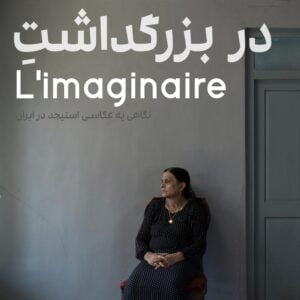In Farsi, we suggest <<Scene Arrangement Photography>> as a translation for Staged Photography. In the Encyclopedia of Art written by Ruyin Pakbaz, we are faced with this translation. To grasp the content of this term, a slight semantic shift can be noted. In some cases, Scene Photography or Photography of Scene are used as linguistic and content equivalents for Staged photography. What these translations aim for is photography of theatre scenes or theatre photography. By delving a little deeper into the history of photography, we realize that this semantic slippage is not unrelated to the origin, nature, and objective of Staged Photography. Organizing a layout, considering the role of the actor, and perceiving the elements depicted in the staged tableaux photographs have much in common with theatre. Staged Photography confronts the viewer with a theatre-like setting, often achieved through actors and dramatization within the photo. While documentary photography emphasizes a cold gaze through the camera, Staged Photography points to artificiality and exaggerated execution. A documentary photographer is an observer, whereas a Stage Photographer guides an enthusiastic intervention.
Narrative Tableaux: In these tableaux, live models or mannequins are arranged by the photographer in roles inspired by society, mythology, and imagination. Sandy Skoglund, William Wegman, and Joel-Peter Witkin have produced photos in this branch.
In the history of photography in the 1980s, we encounter doubts about the relationship between photography and reality. Out of these uncertainties, a form of 19th century photography re-emerges onto the scene. Photographers once again engage in creating captivating scenes. 'Taking a Photo' gives way to 'Creating a Photo.' Themes such as artistic authenticity, gender, storytelling, race, and self-portraits are evident in Staged Photography during this period. Photographers endeavor to extricate their medium from a passive stance. The practice of staging scenes was prevalent in fashion photography, advertising, and portraiture. By taking advantage of all genres of photography, Staged Photography provides a creative and independent combination in the history of the photographic medium. Aesthetic and conceptual beauty in constructive discourse is conspicuous in the art of contemporary Staged Photography.
Photography critic, Andreas Vowinckel, has distinguished four branches of Staged Photography from one another.
Self-portraits: In these, the artist plays various roles, much like what Cindy Sherman extensively does.
Miniature Models: This branch also addresses narratives but rather uses modeling tools and dolls. Joachim Mogarra and Arthur Tress have created photographs in this setting.
Installations and Photo-Sculptures: Here, the artist confronts the audience with large-scale photographs that intricately display objects together. Ariel Bonsen is one of the most famous photographers in this genre.
In Iran, the history of Staged Photography can be traced back to the Qajar era. Many of the existing photos in the album of Golestan Palace can be considered the earliest Staged Photographs in the history of Iran, taken during the reign of Naser al-Din Shah. This kind of photography emerged as a proper artistic branch in Iran shortly after the 1980s. In the works of Iranian photographers, historical, social and gender themes were considered more than anything else. Perhaps the limitations on photographers' presence in the field could be considered a reason for the attention towards Staged Photography.
Here, photographers dramatize their historical and social understanding to present a scene of society. Literary arts and mythical themes in Iran's history have been a significant foundation for Iranian Staged Photography. The narrative branch of this genre of photography and its historical themes have received more attention from Iranian photographers in recent decades than other branches. The collected photos in the current exhibition showcase Staged Photography's place in the art scene. These photos are consciously constructed and intervened by the photographer. There are no historical claims behind the curation of this exhibition. The photographers whose images you see in this collection are placed between the past and the future of Iranian photography. The horizon of this exhibition opens a narrow path toward the winding roads of contemporary visual arts in Iran.



